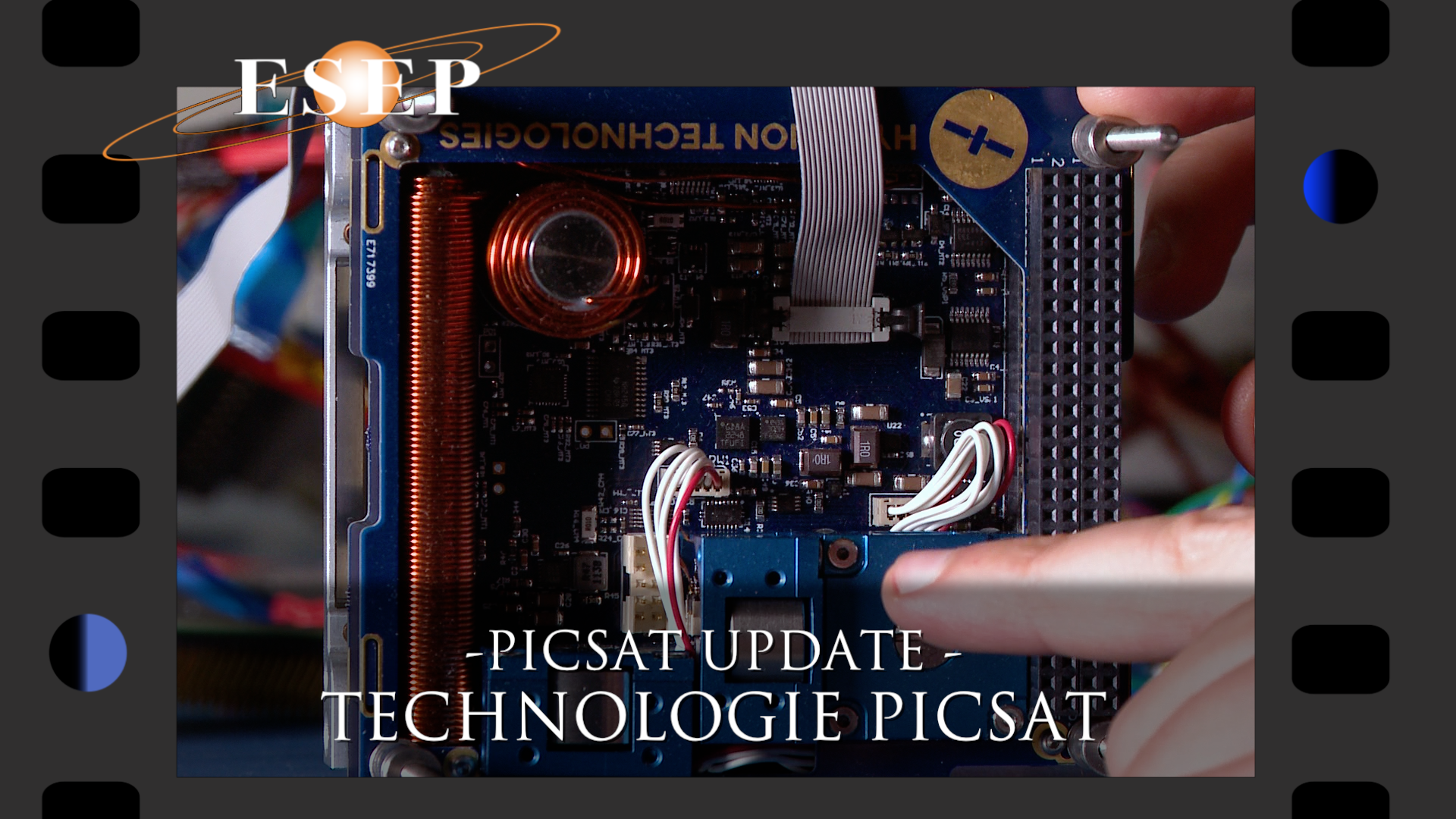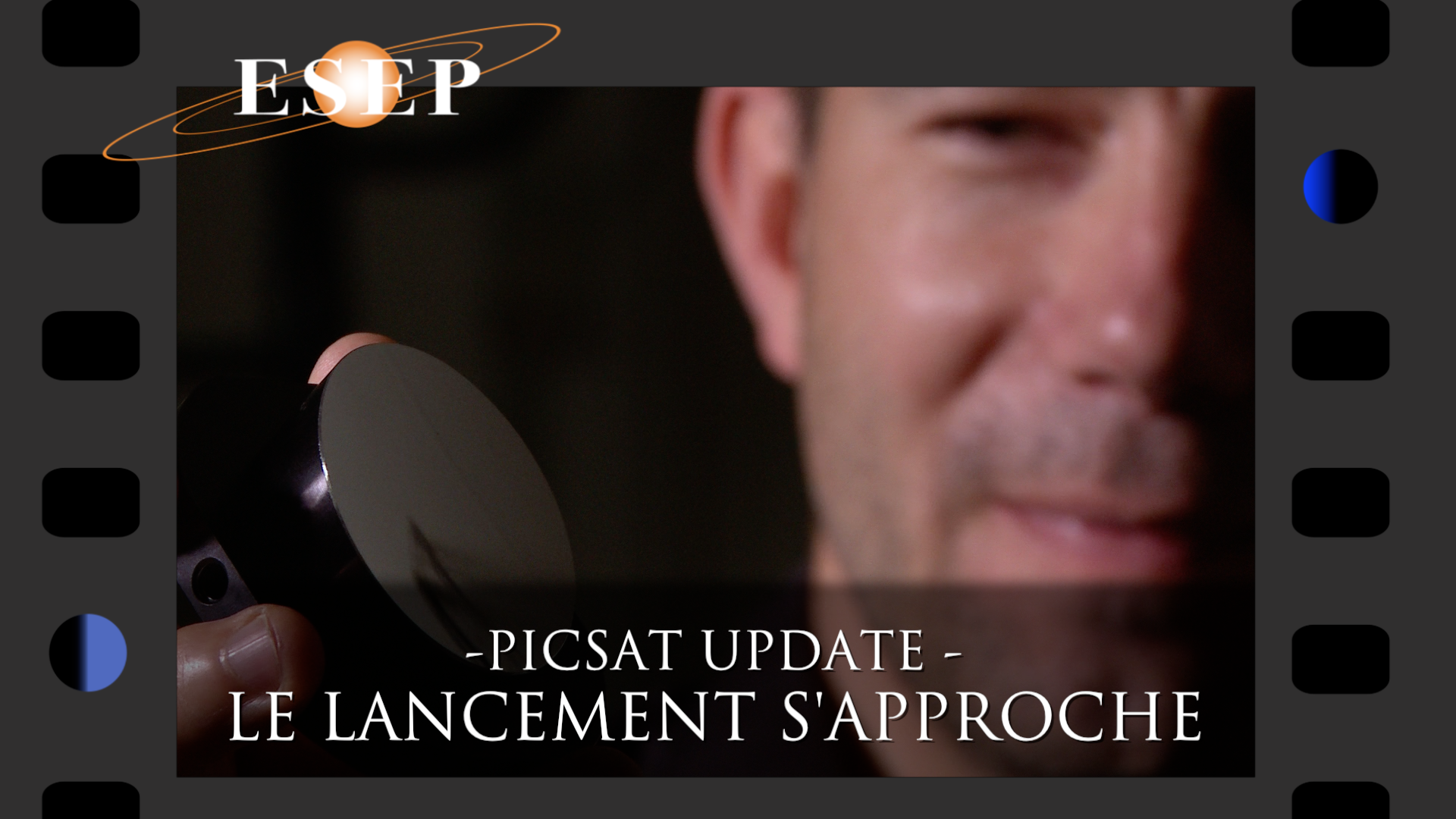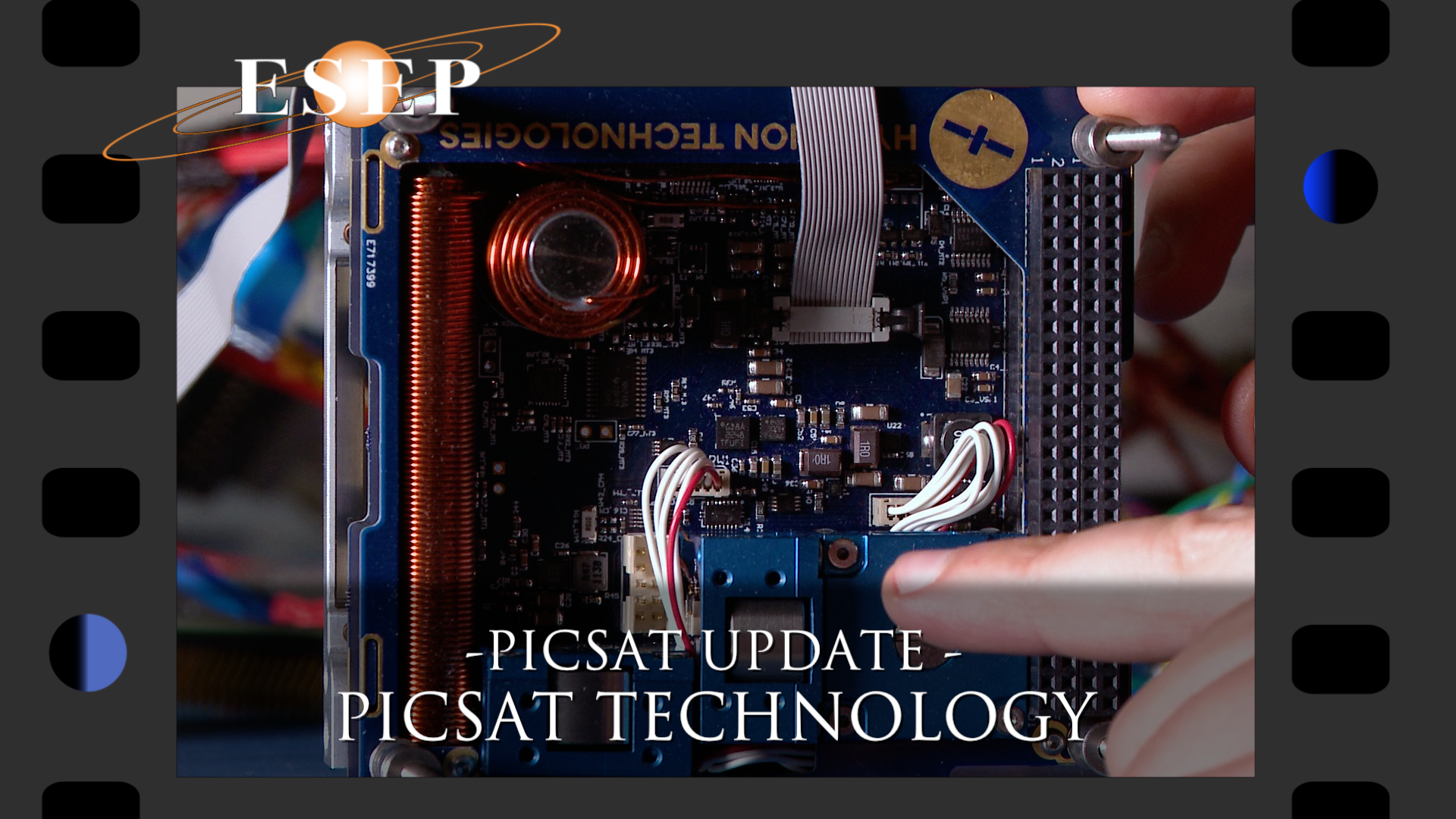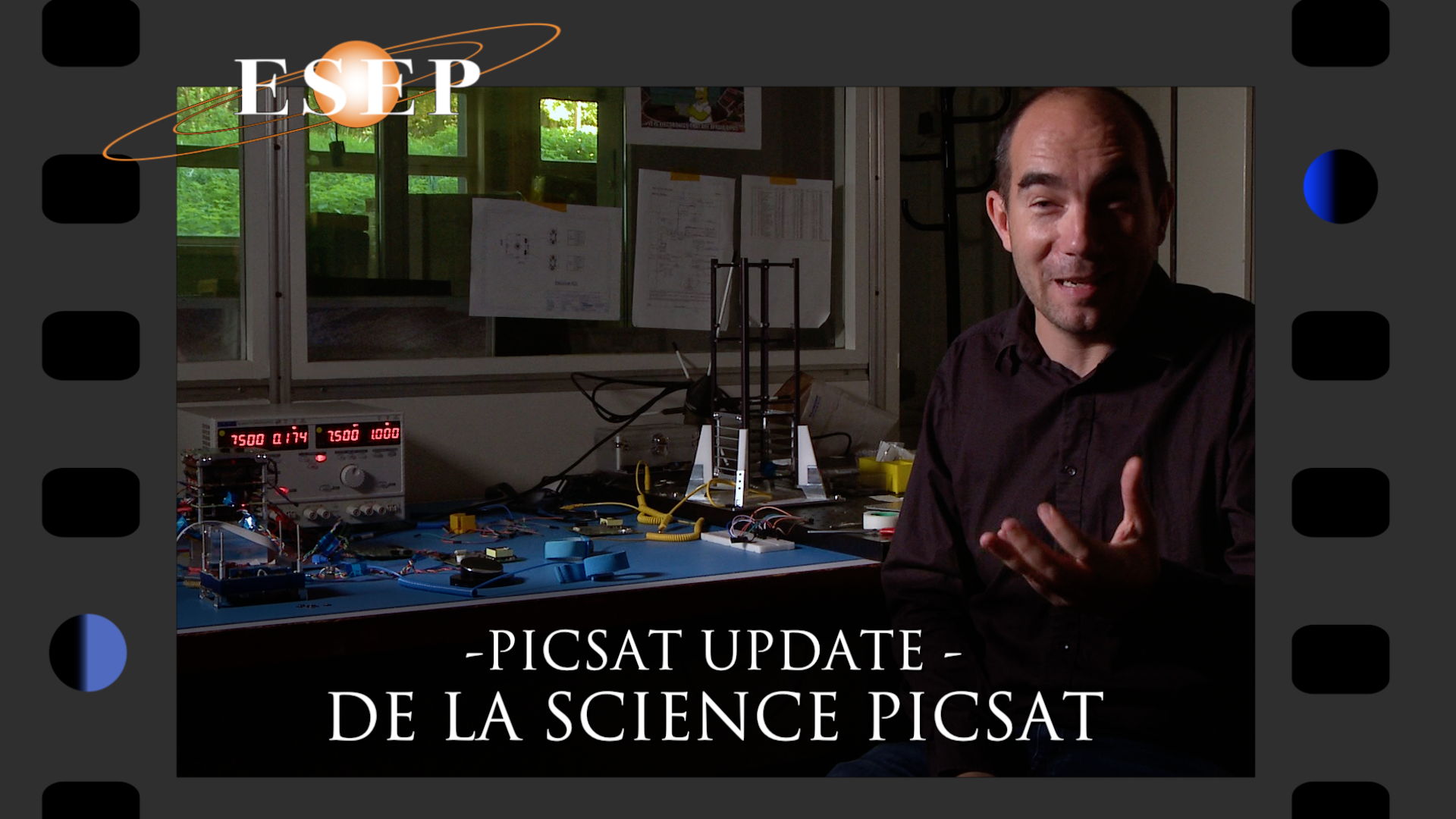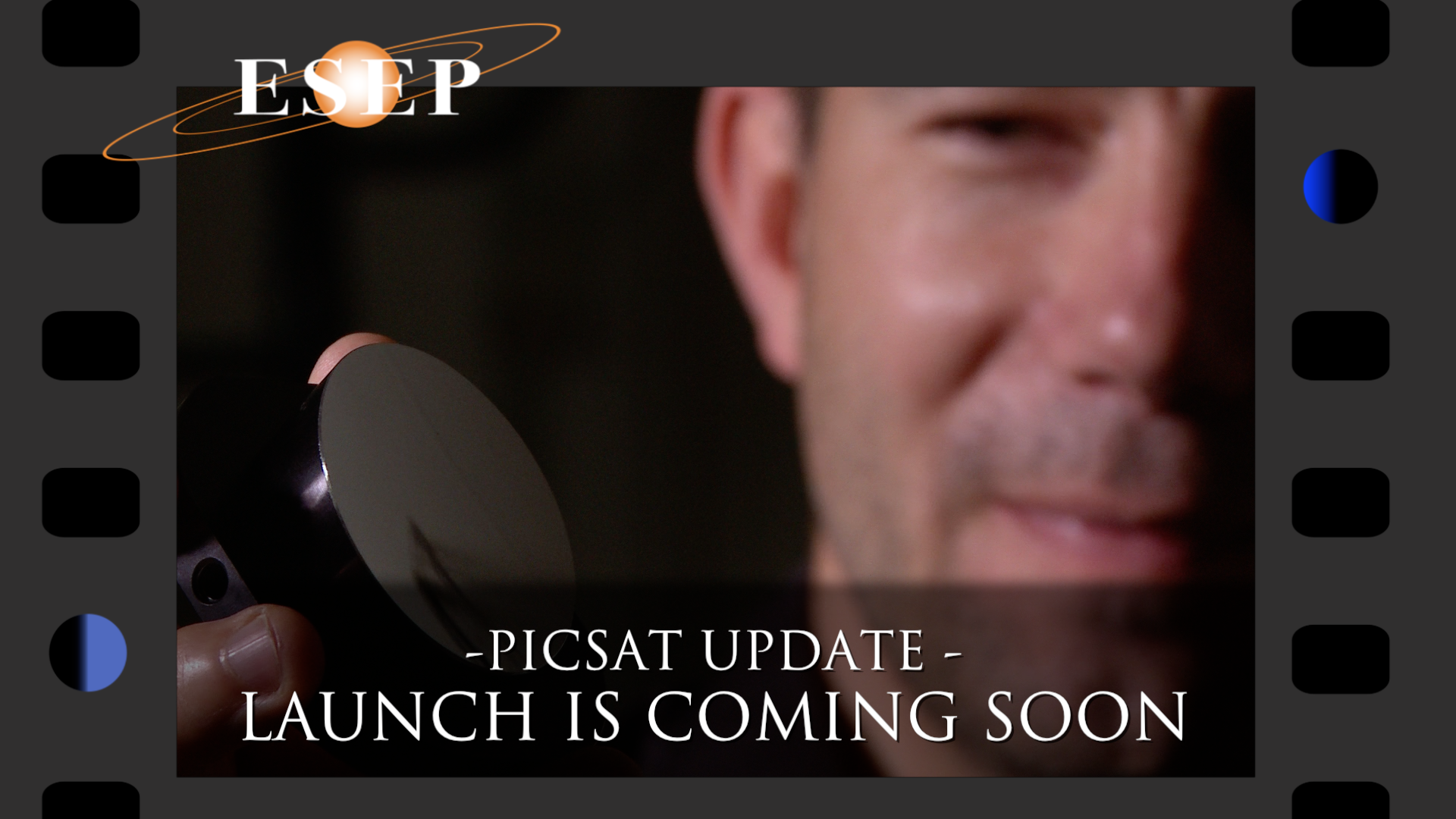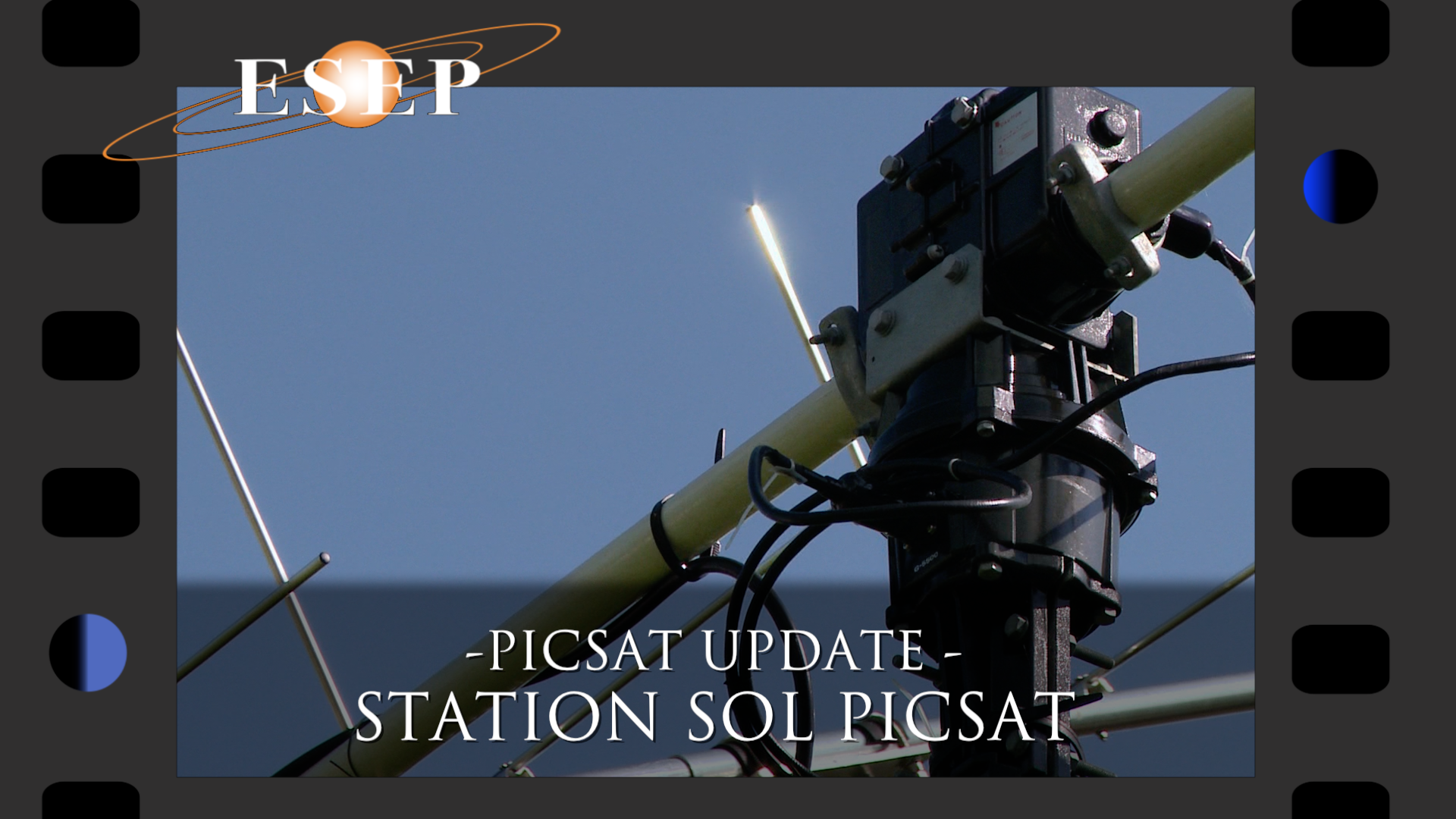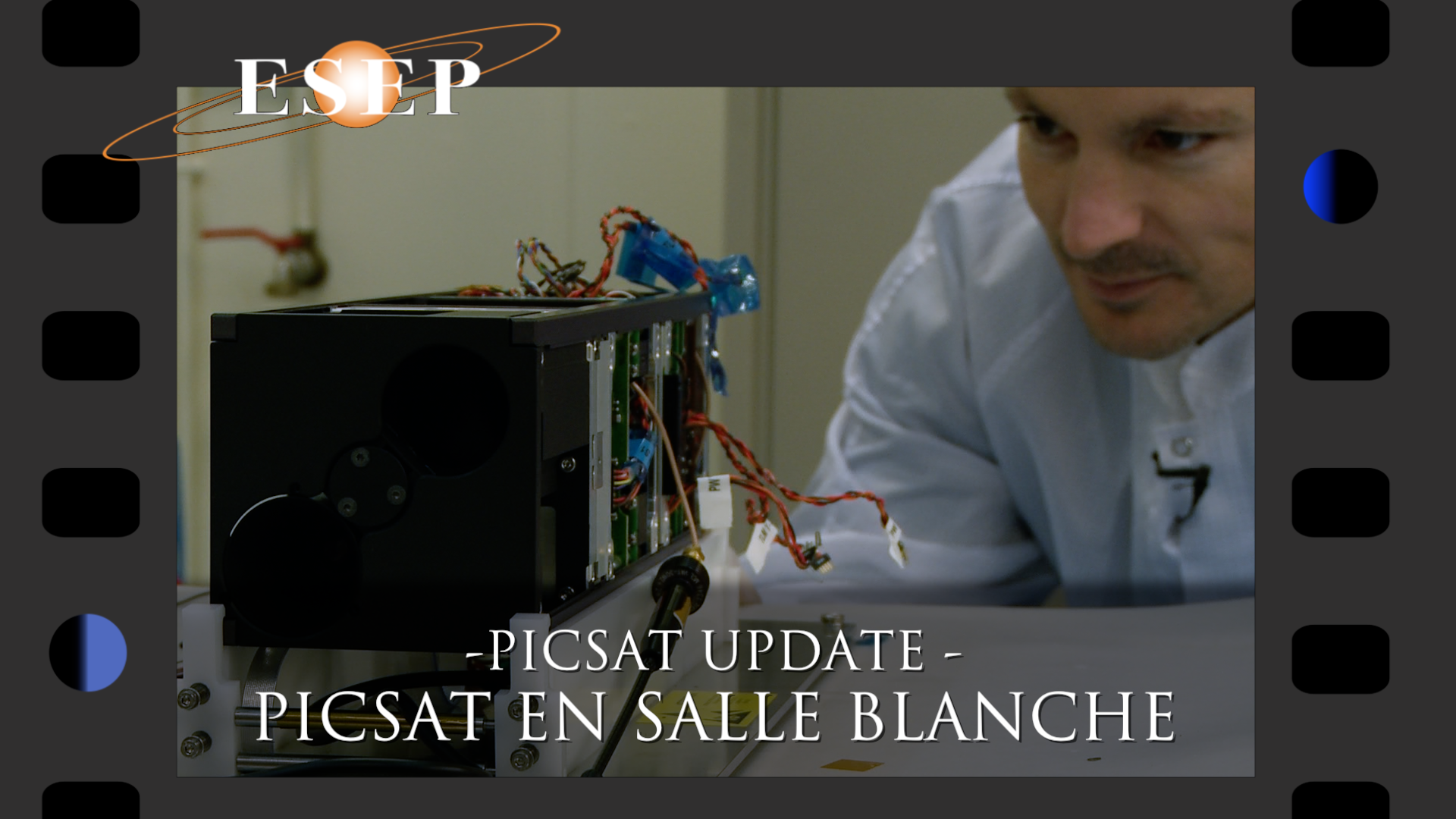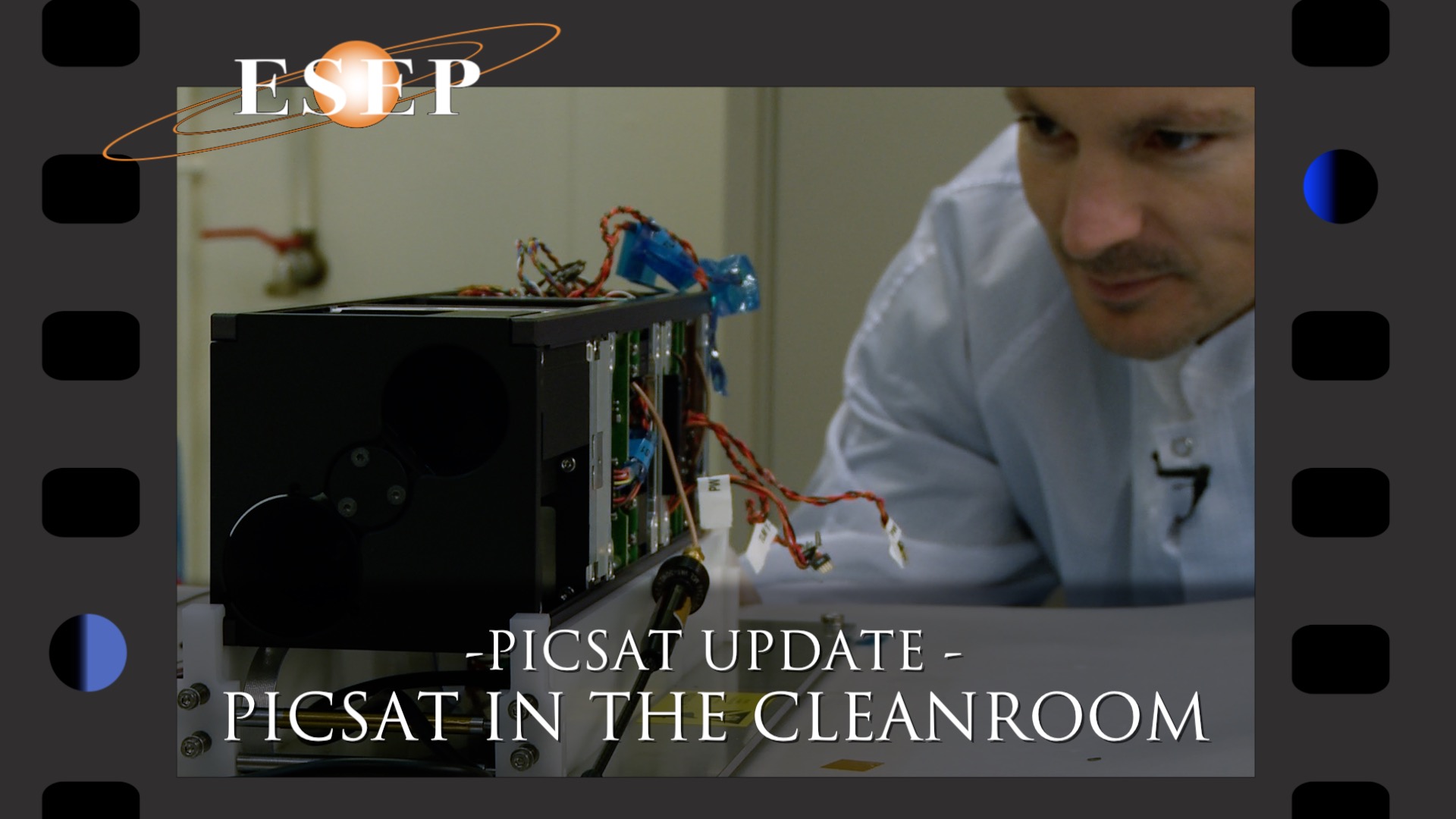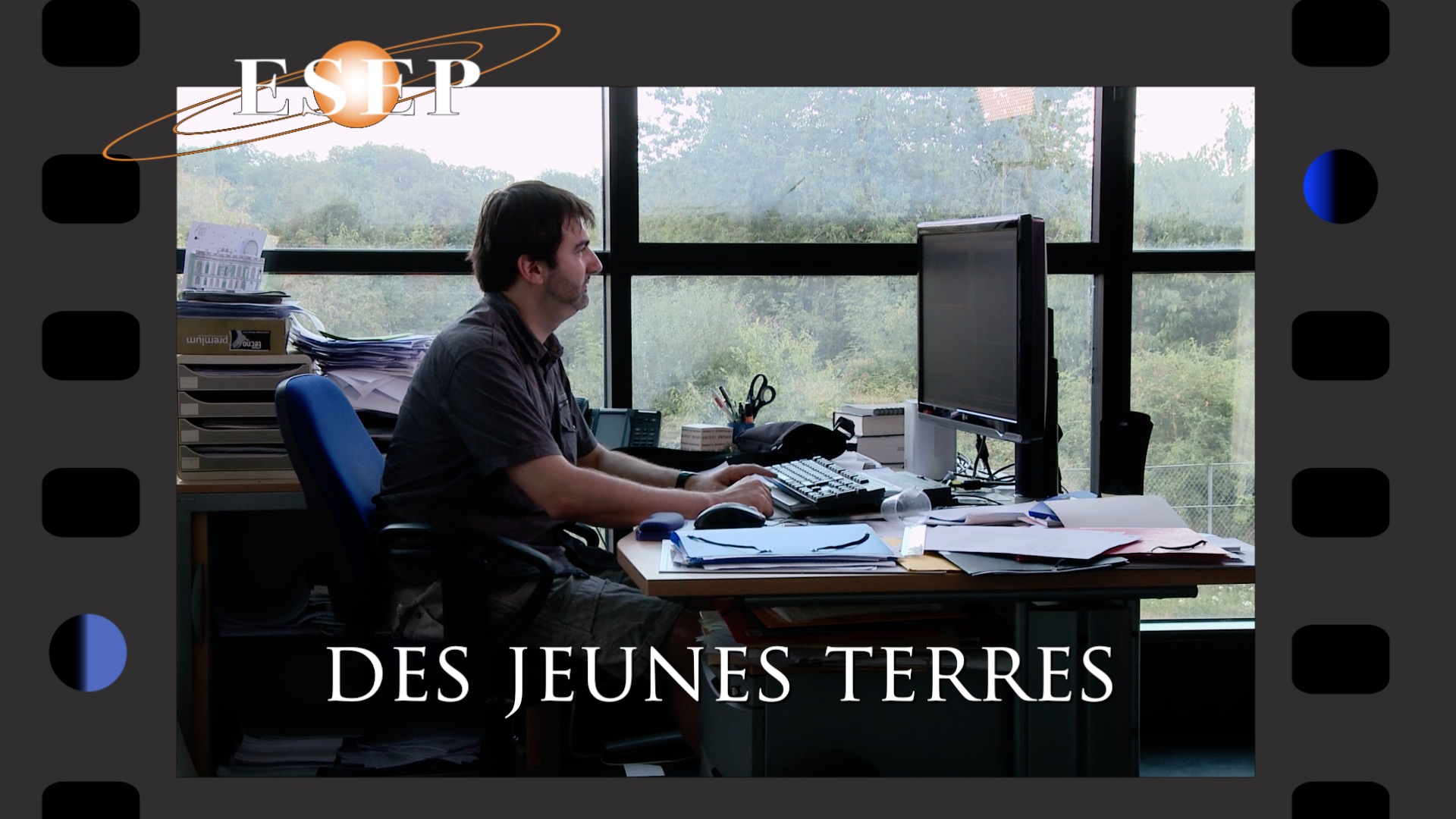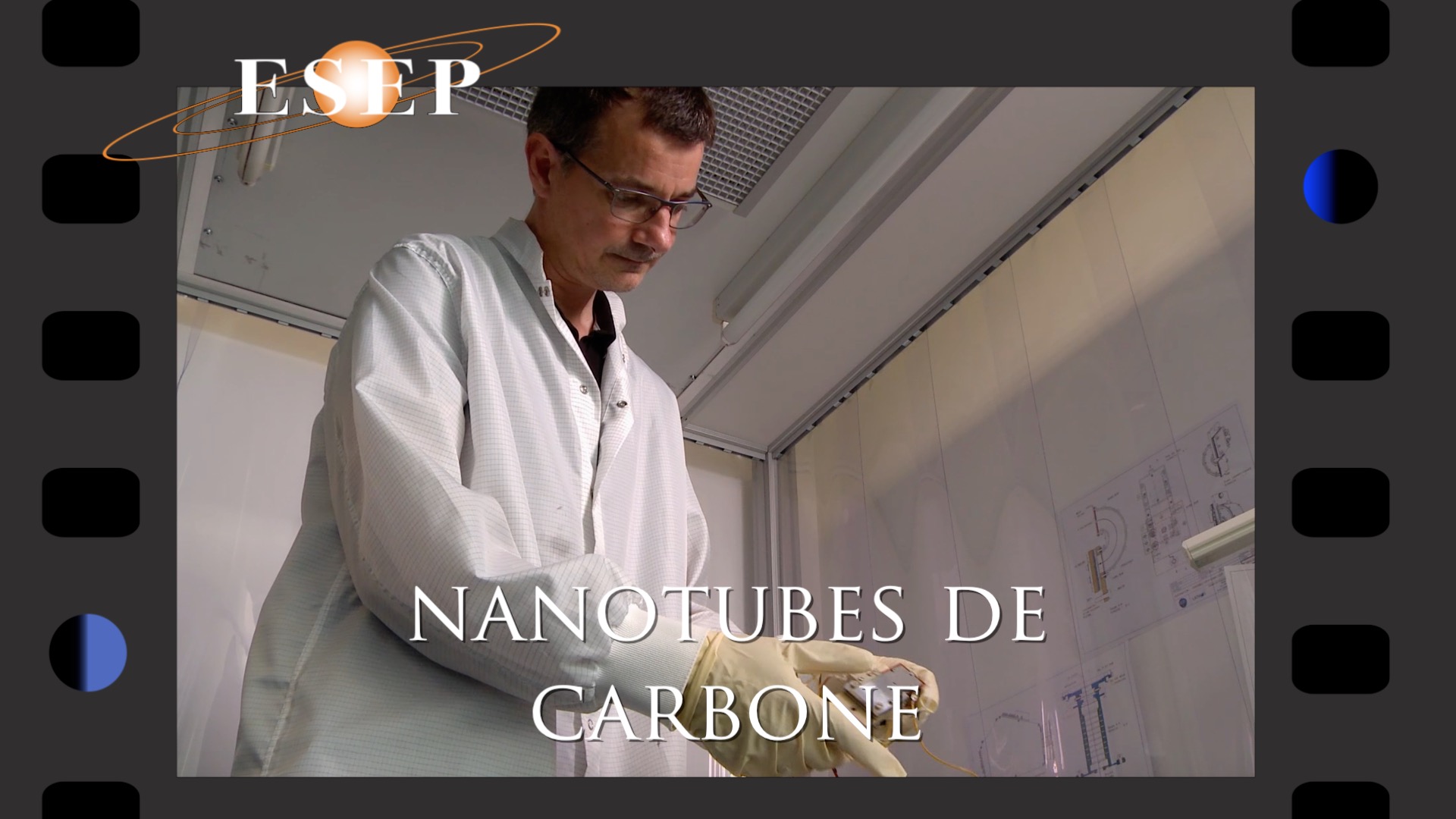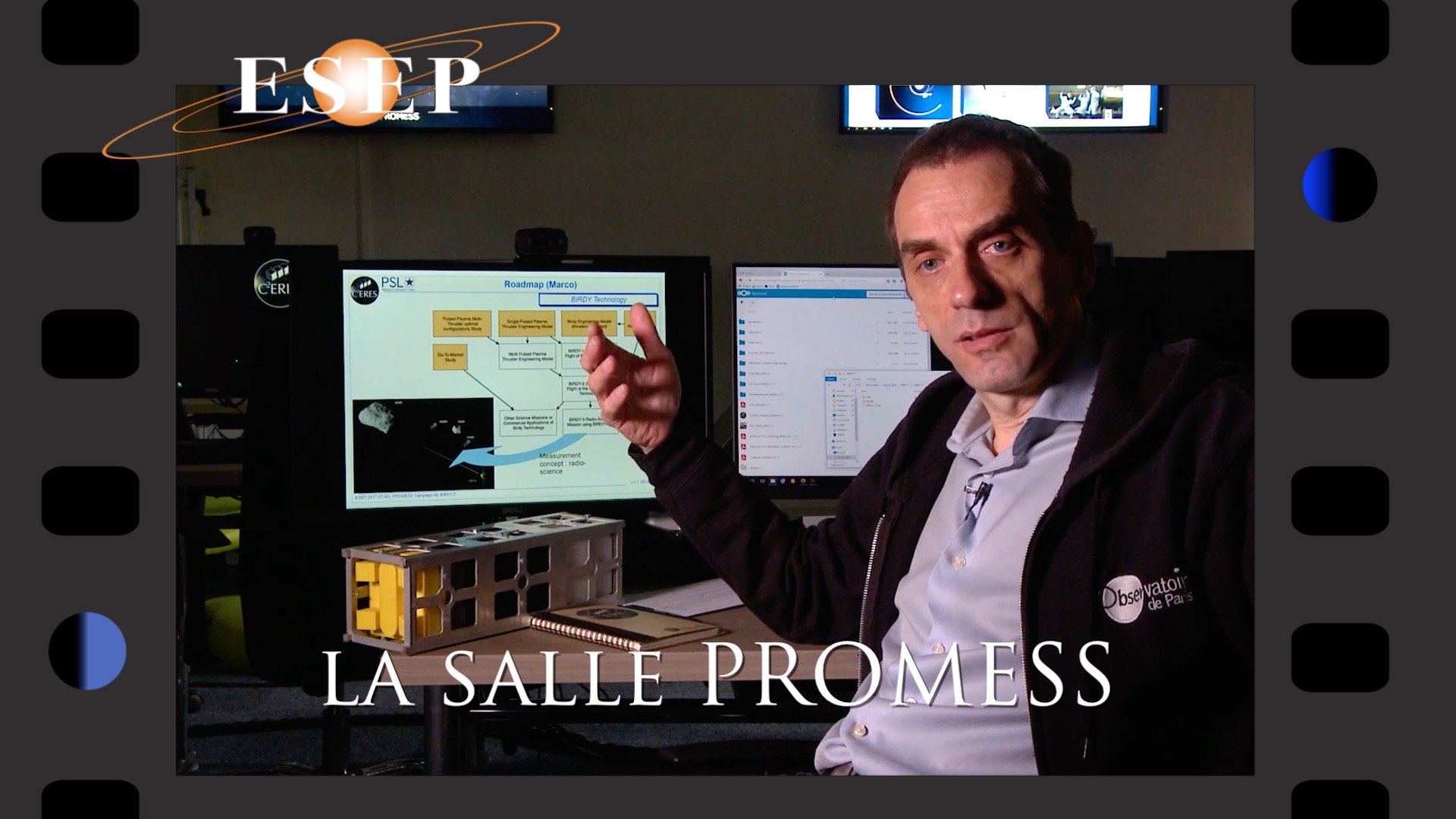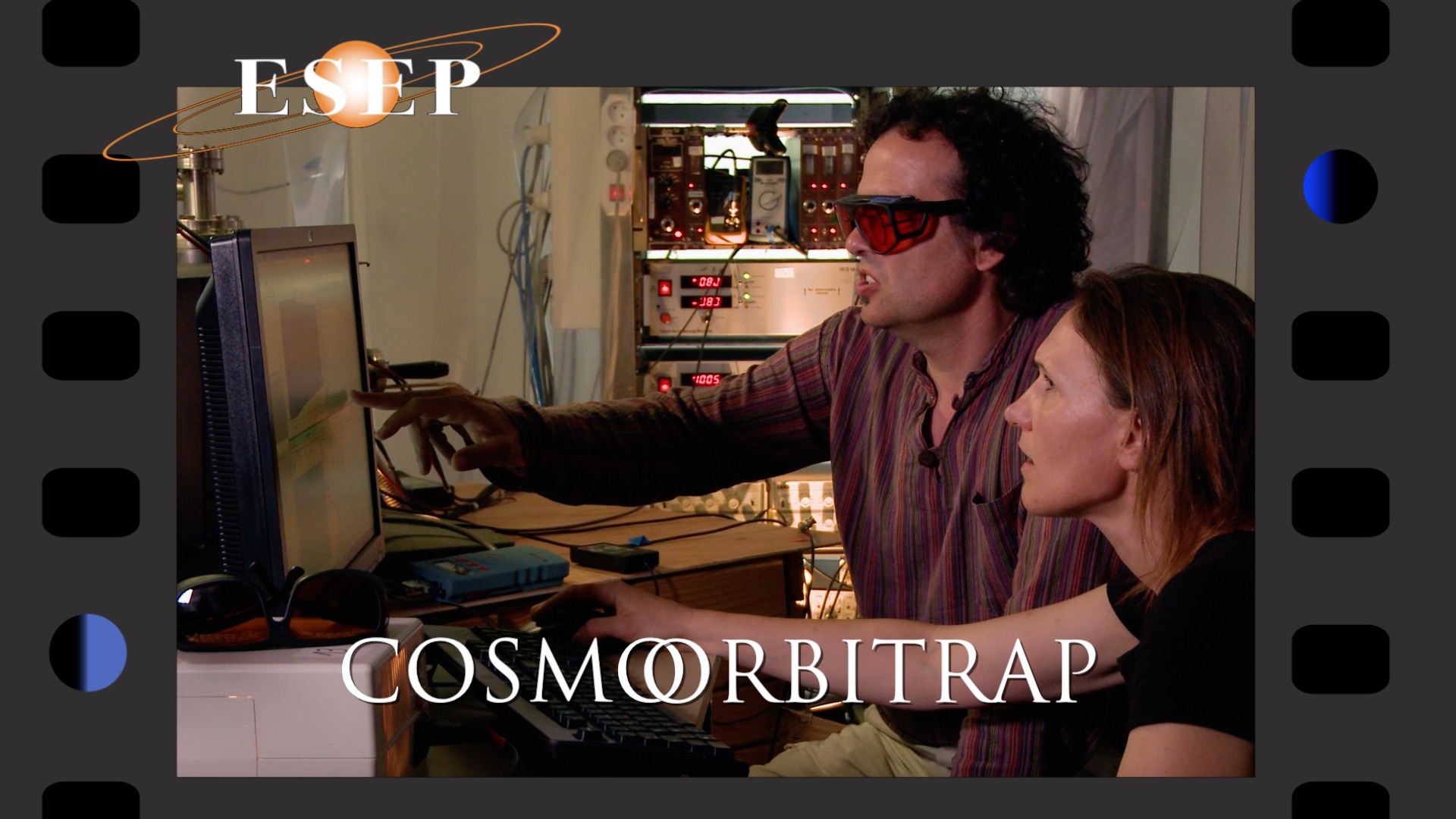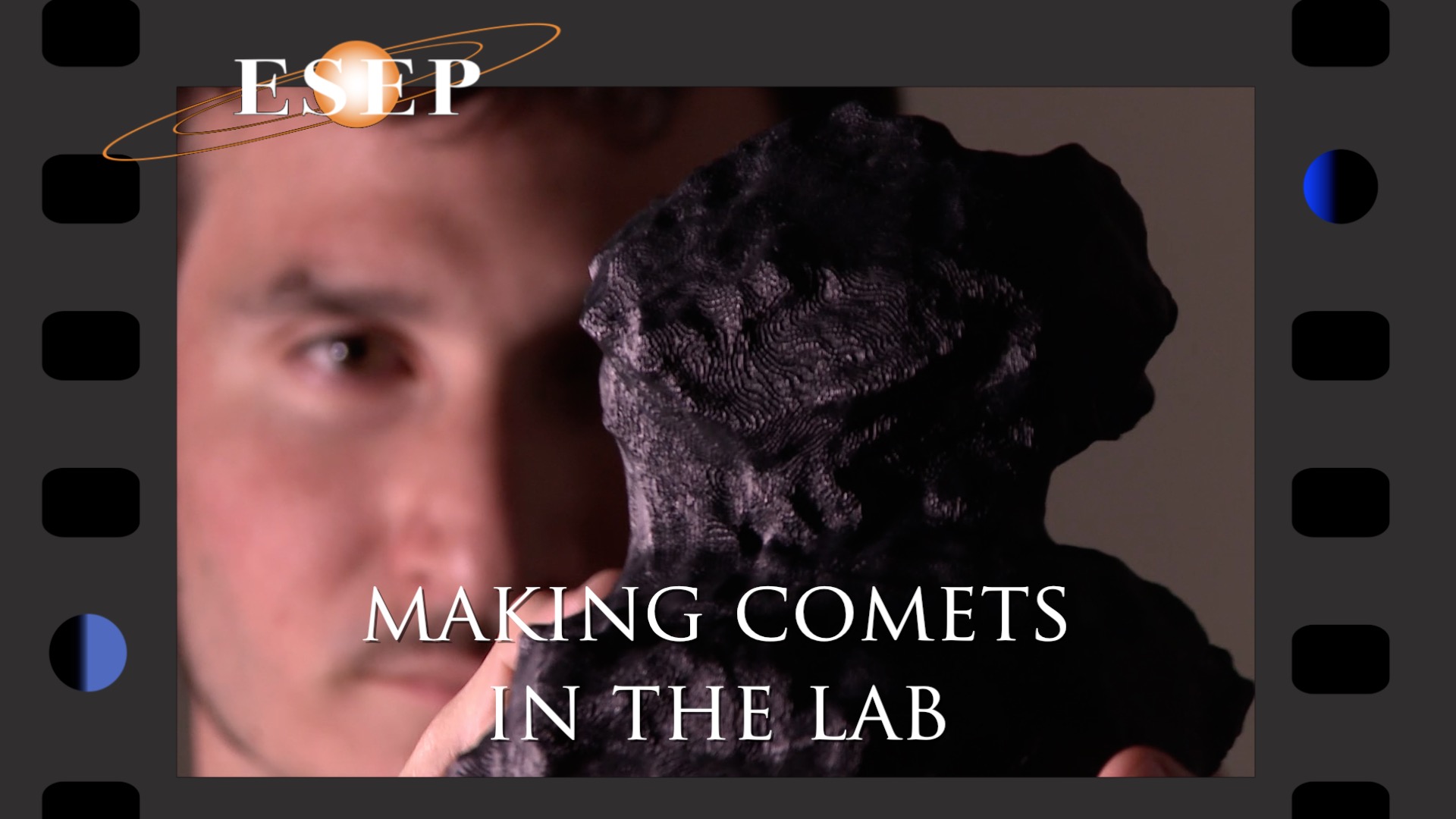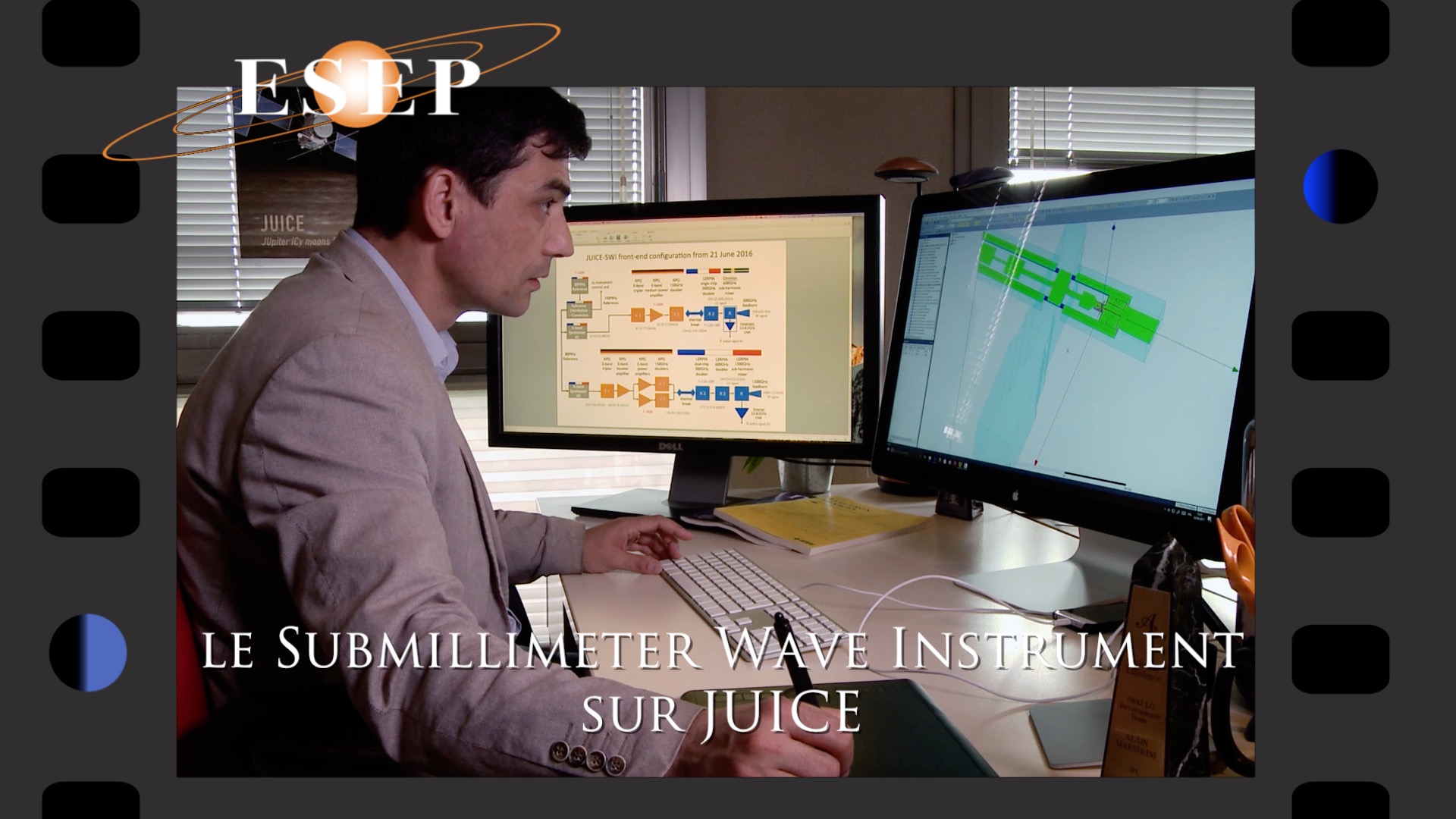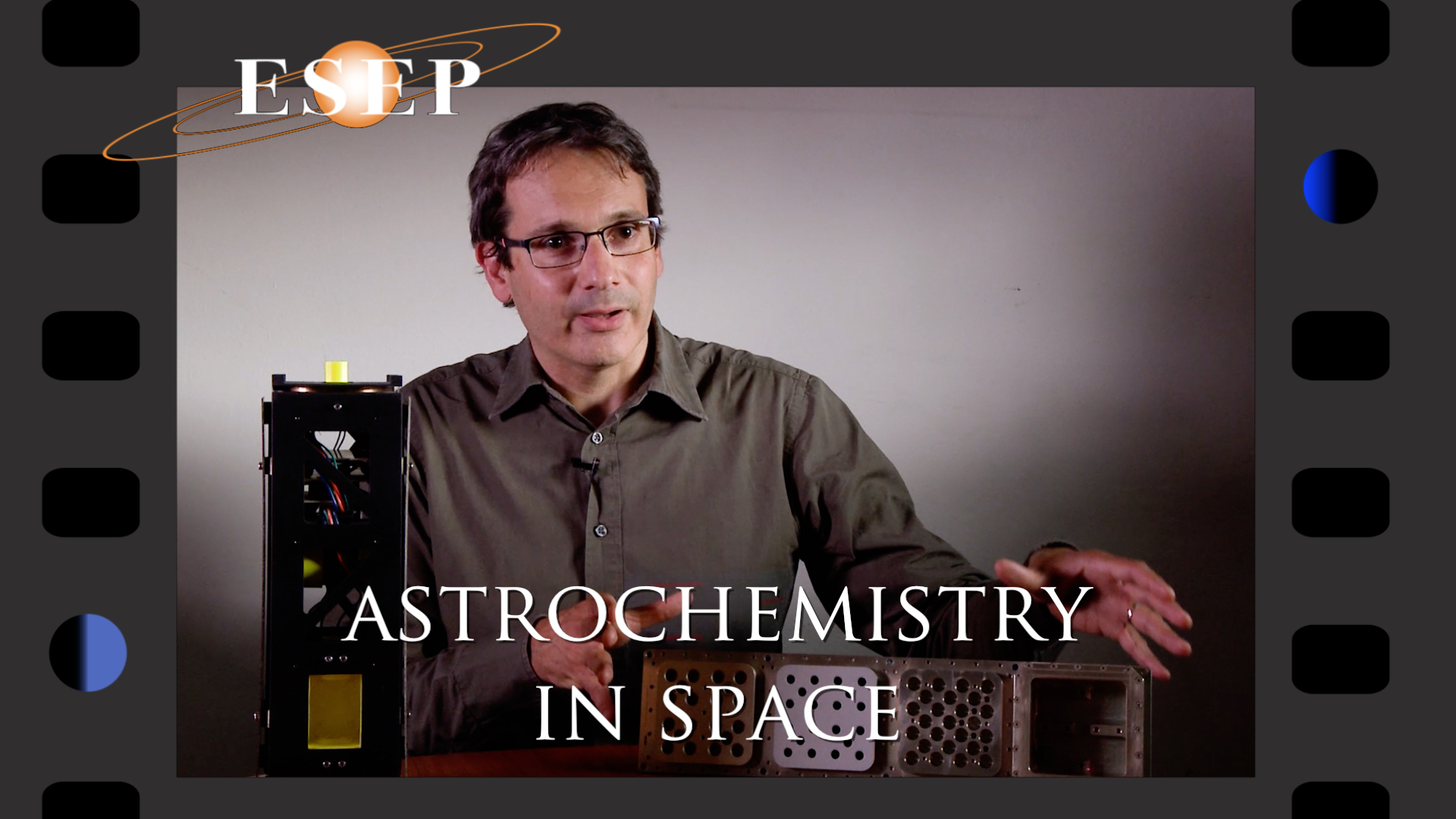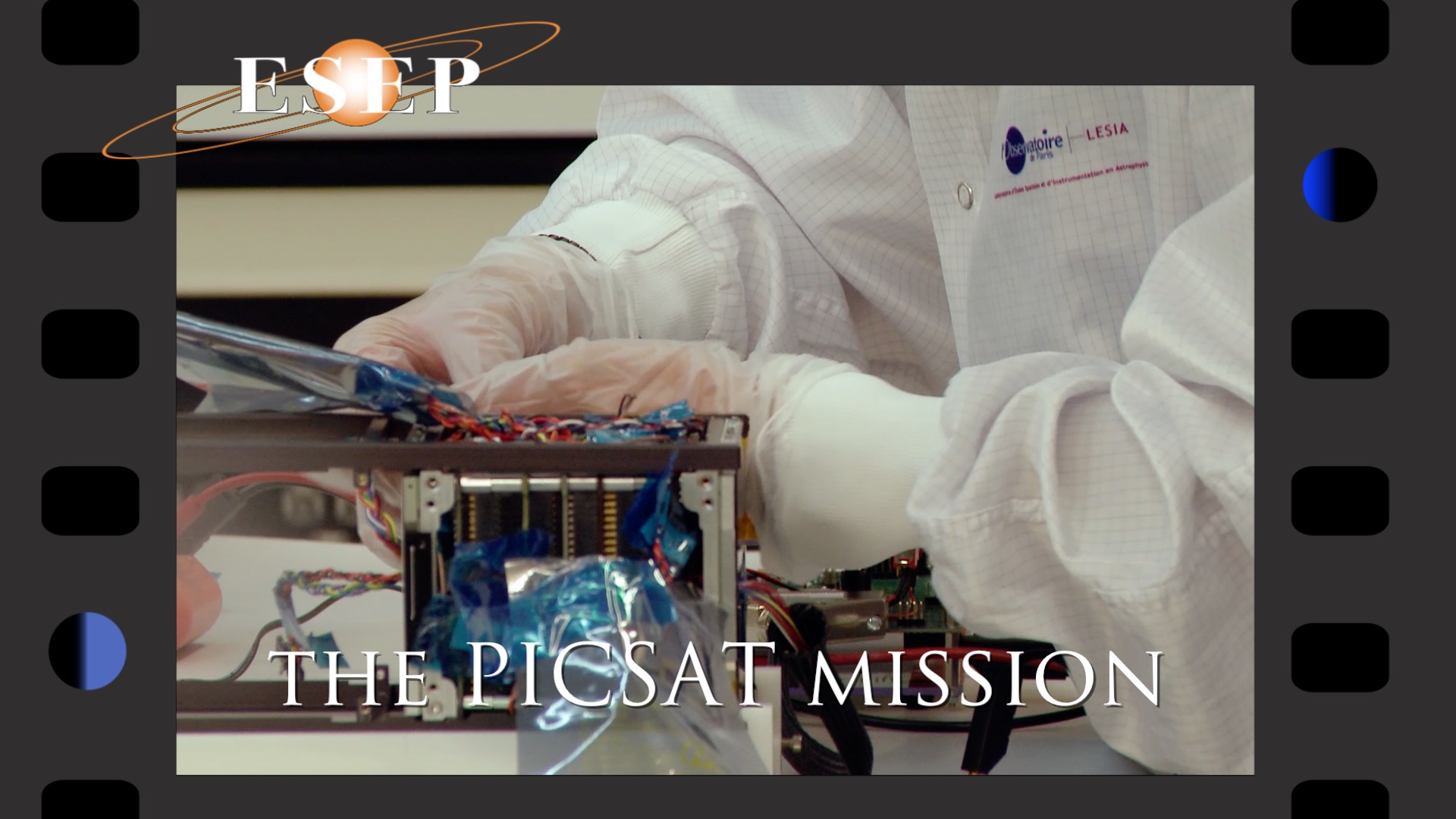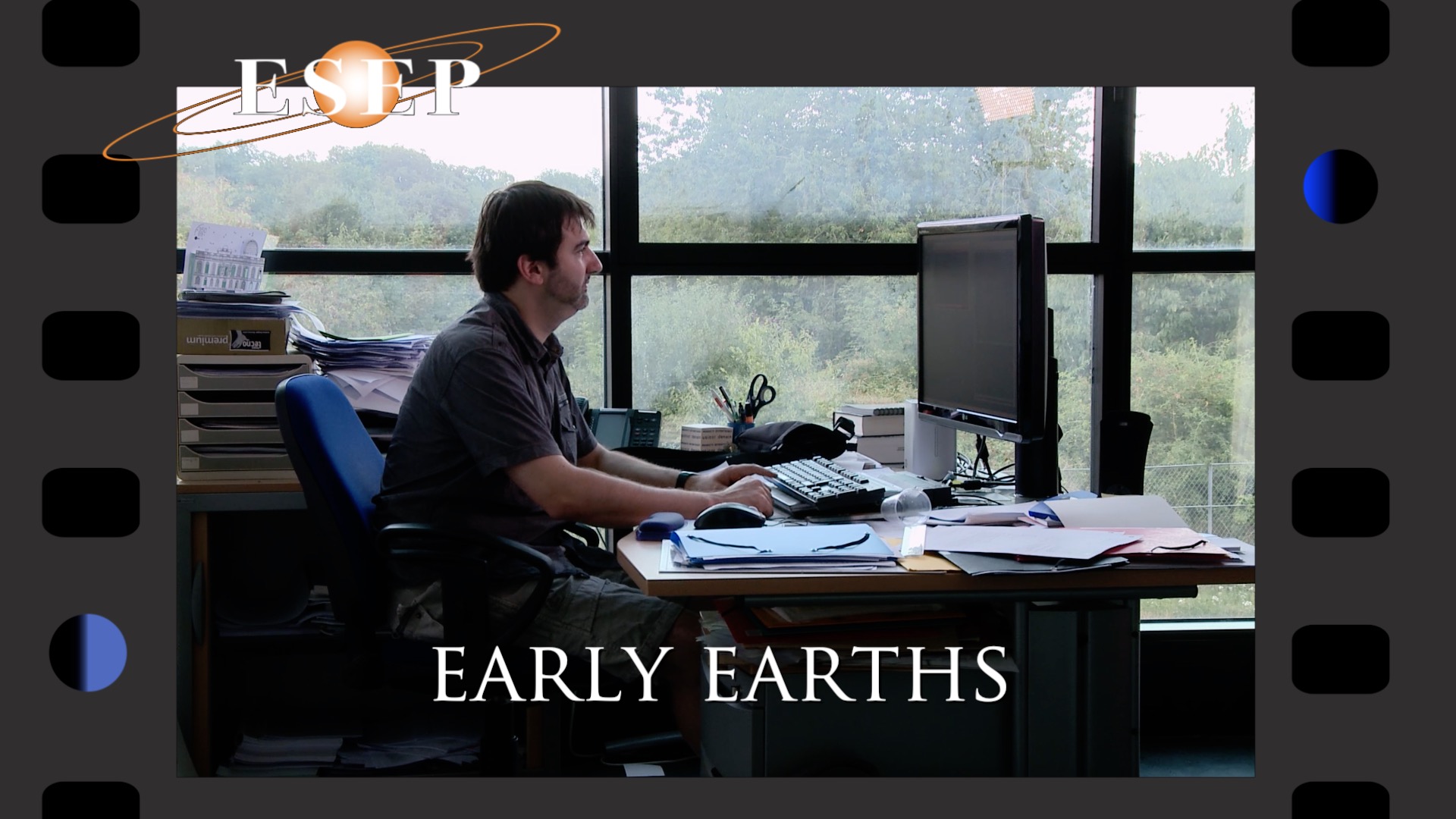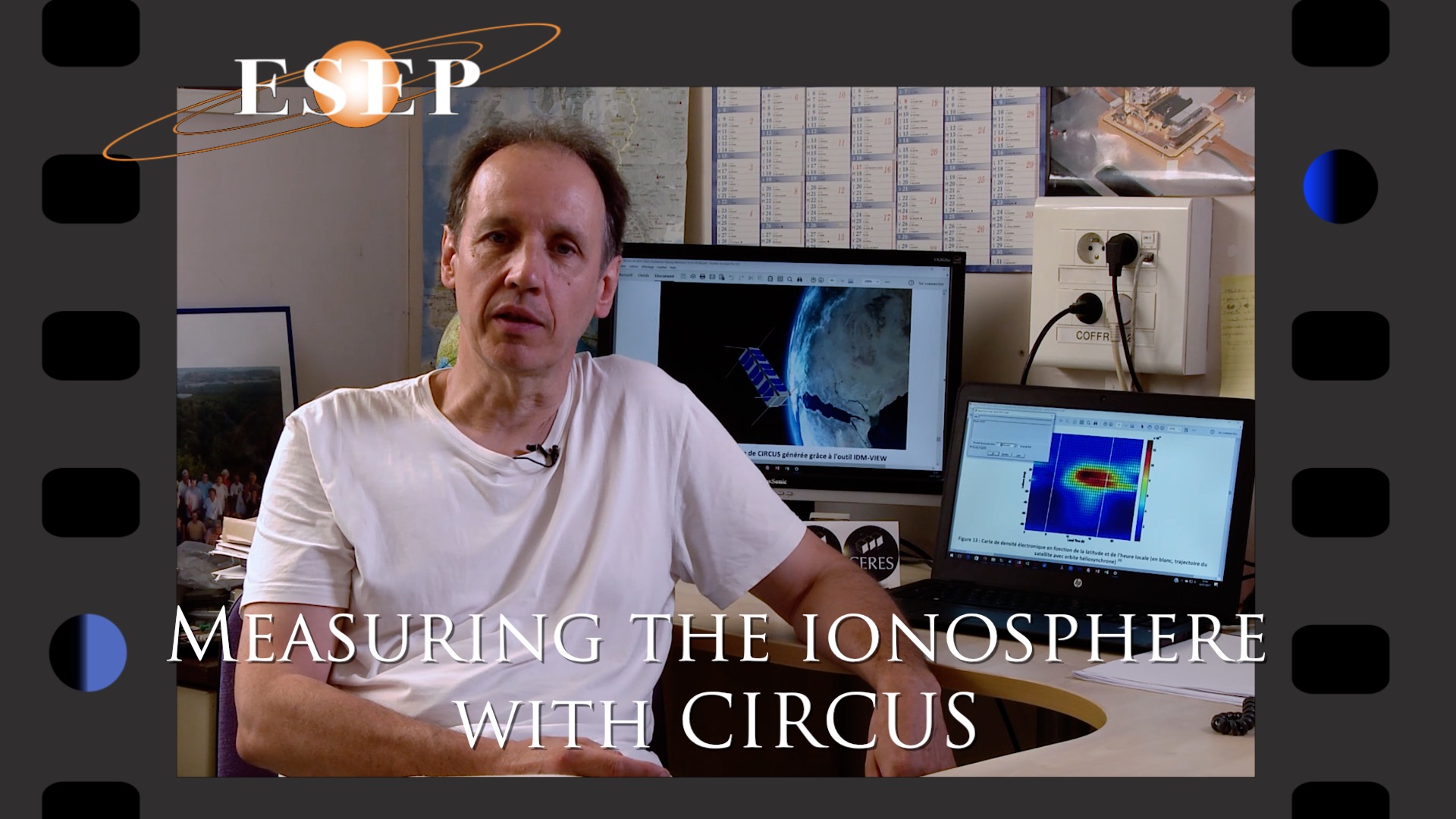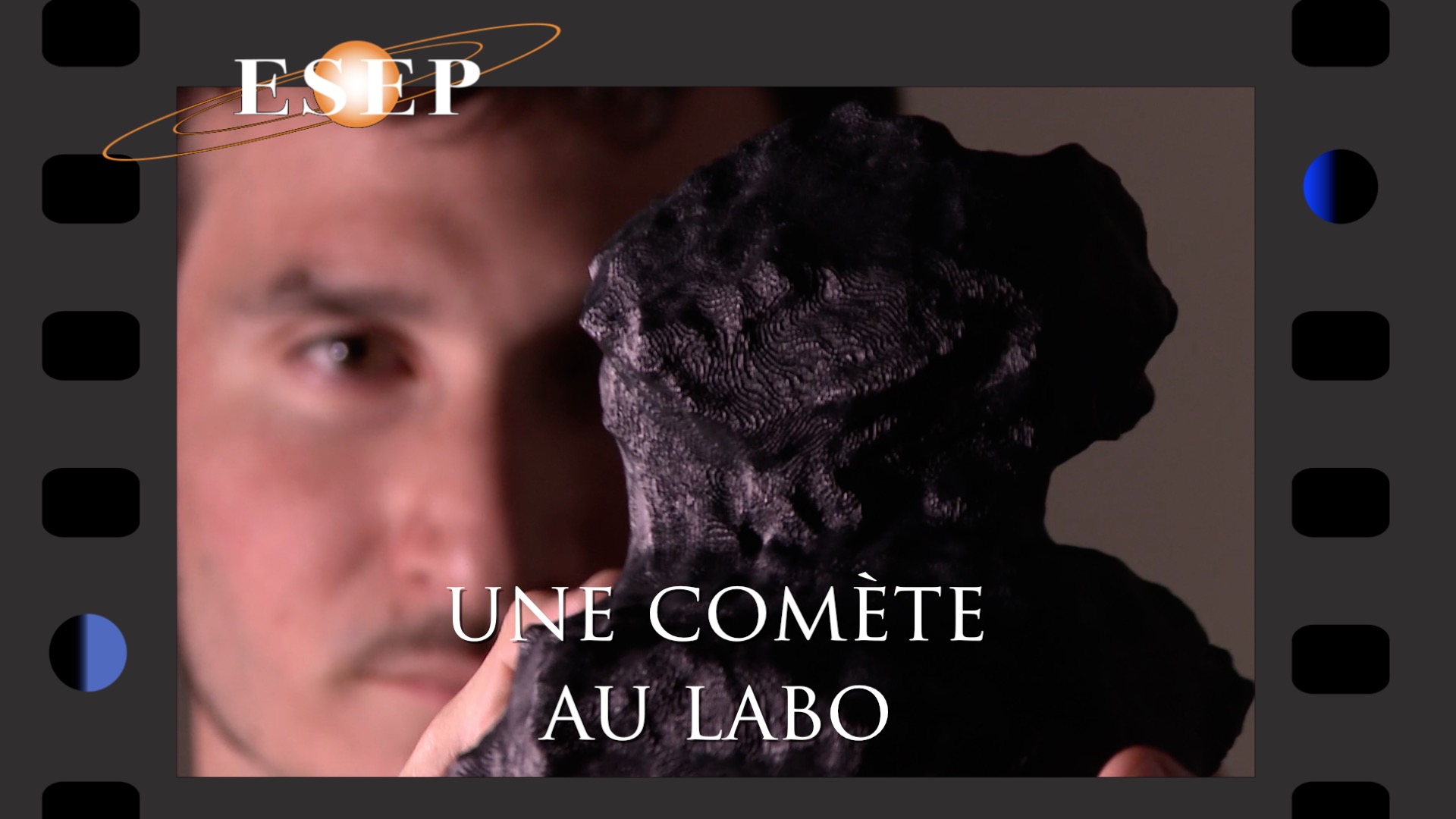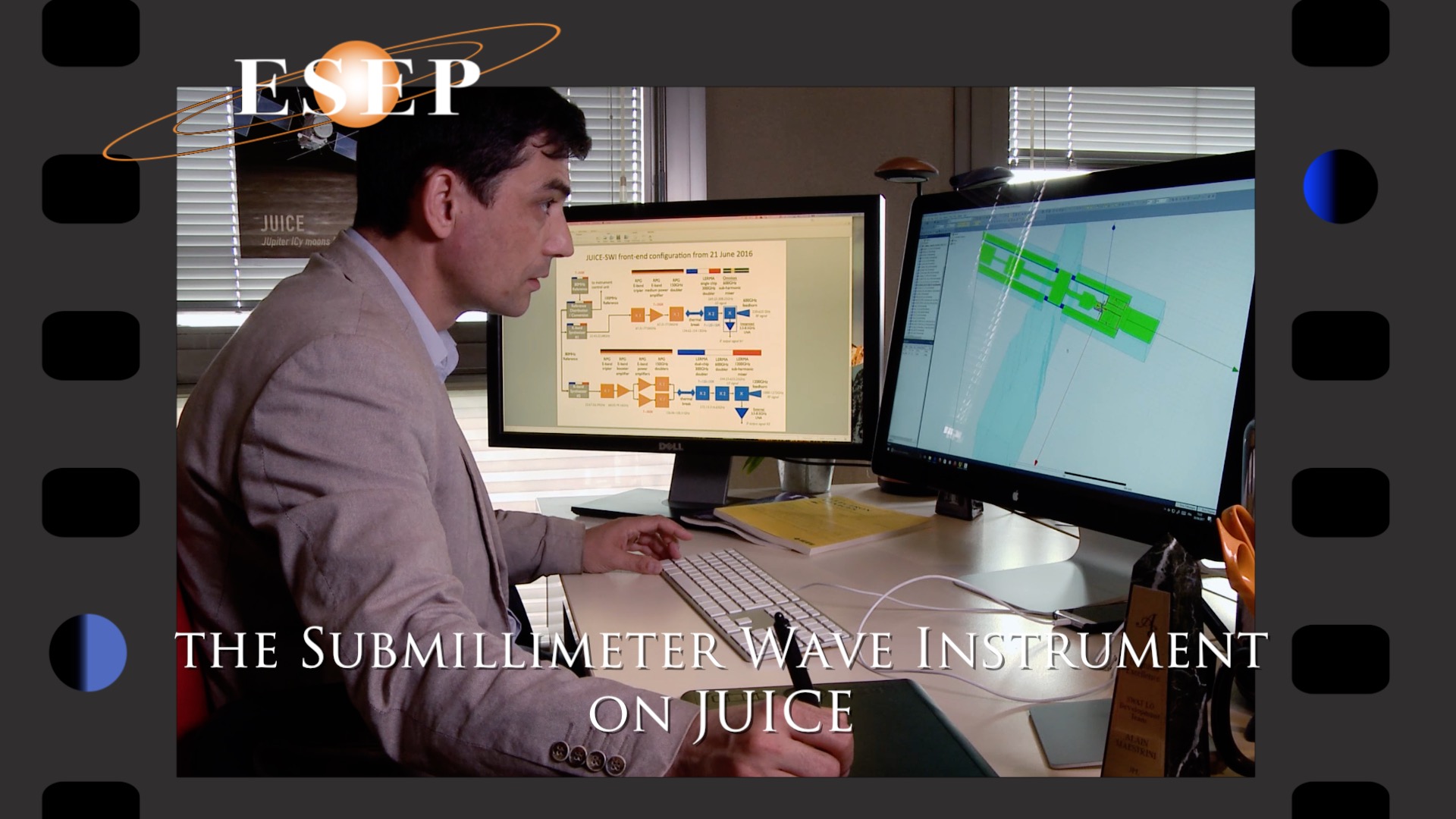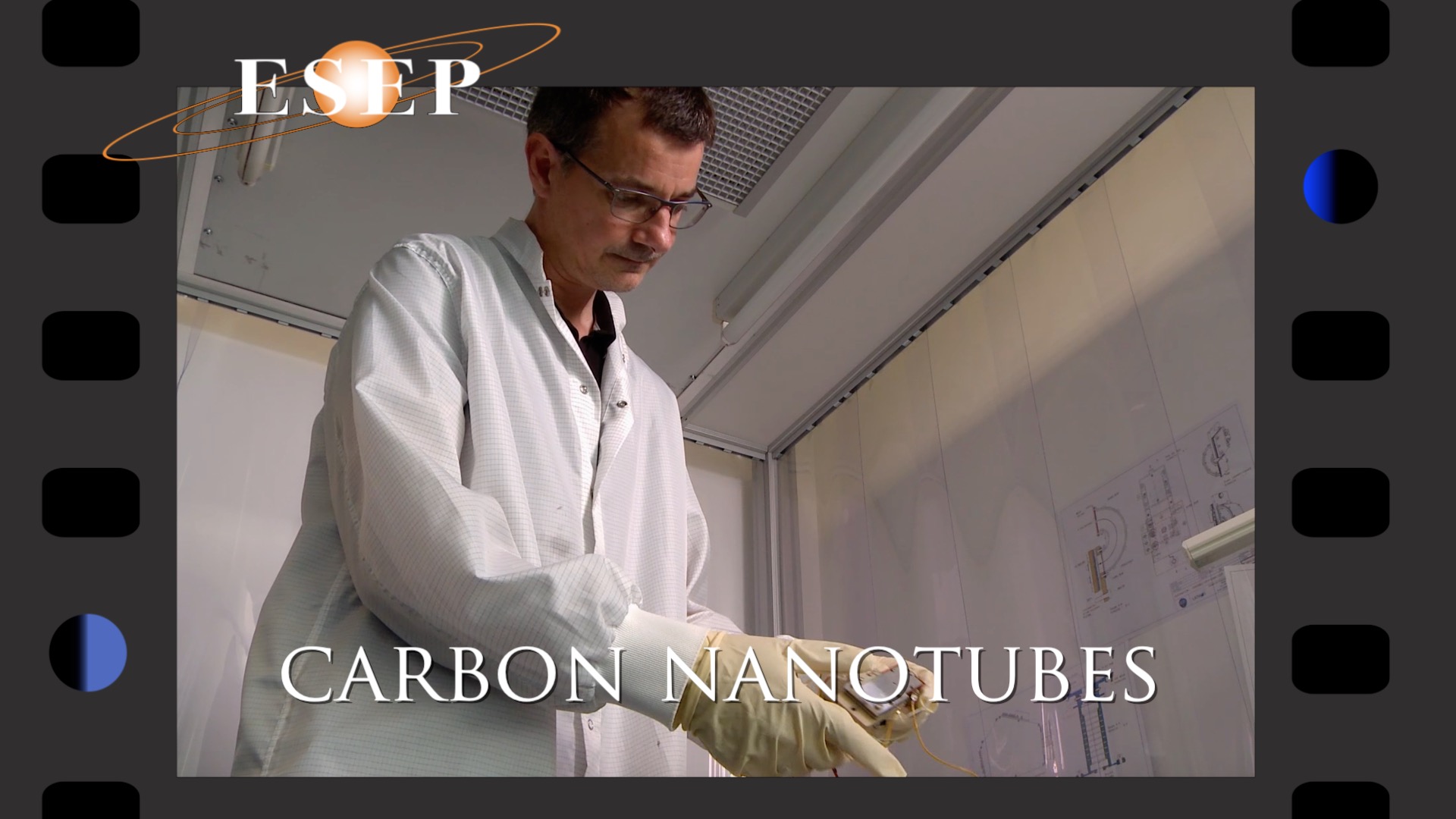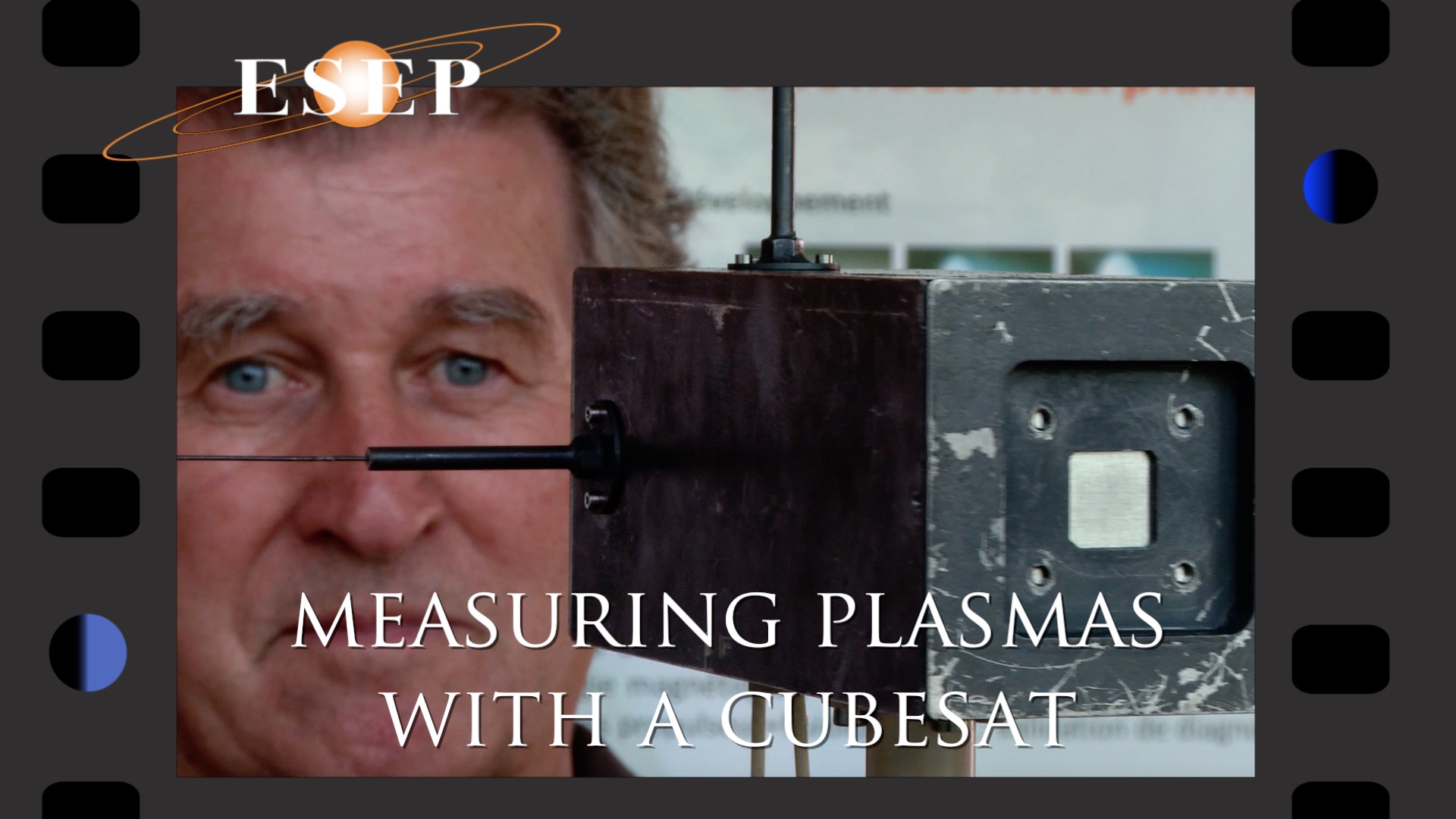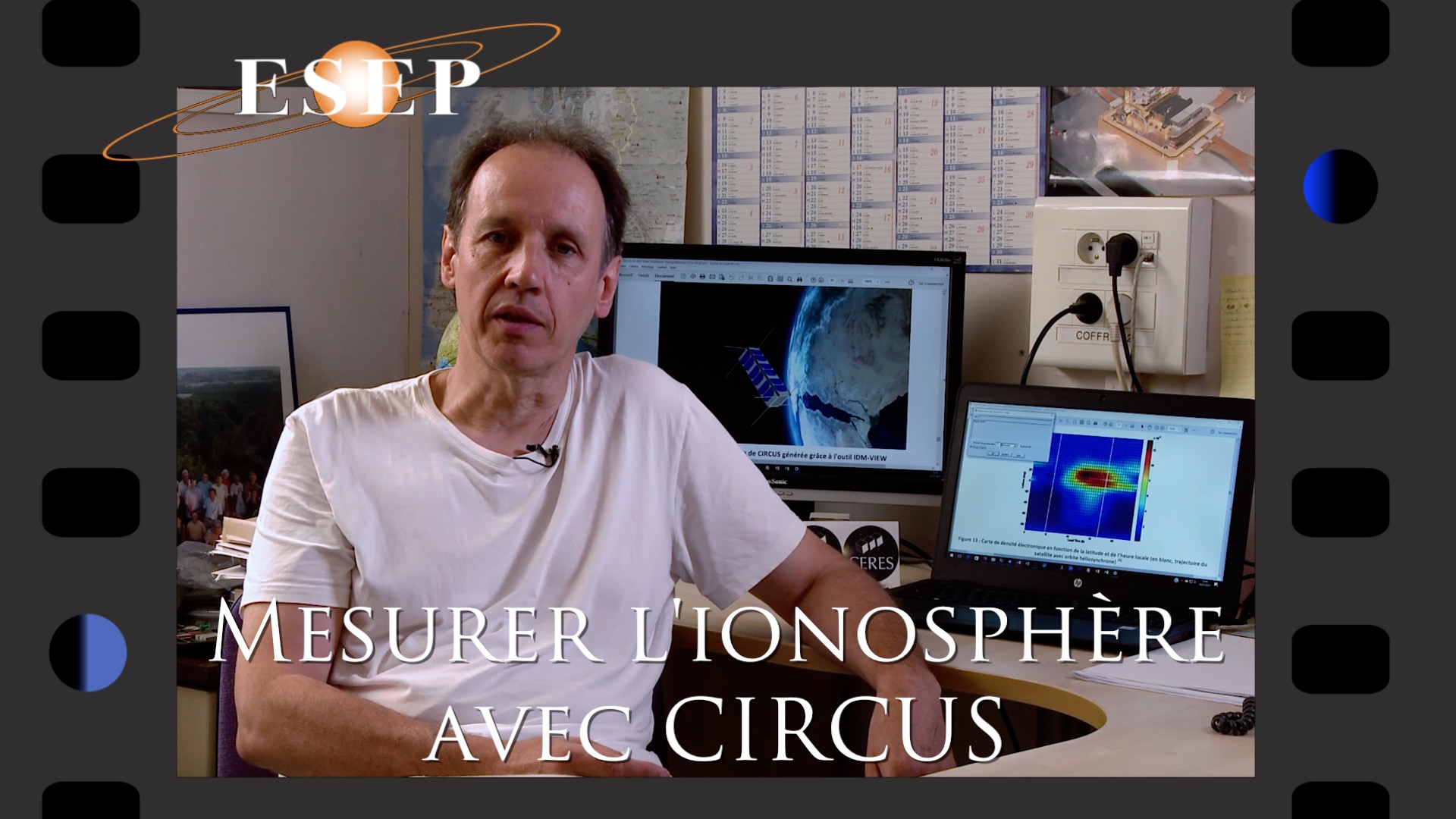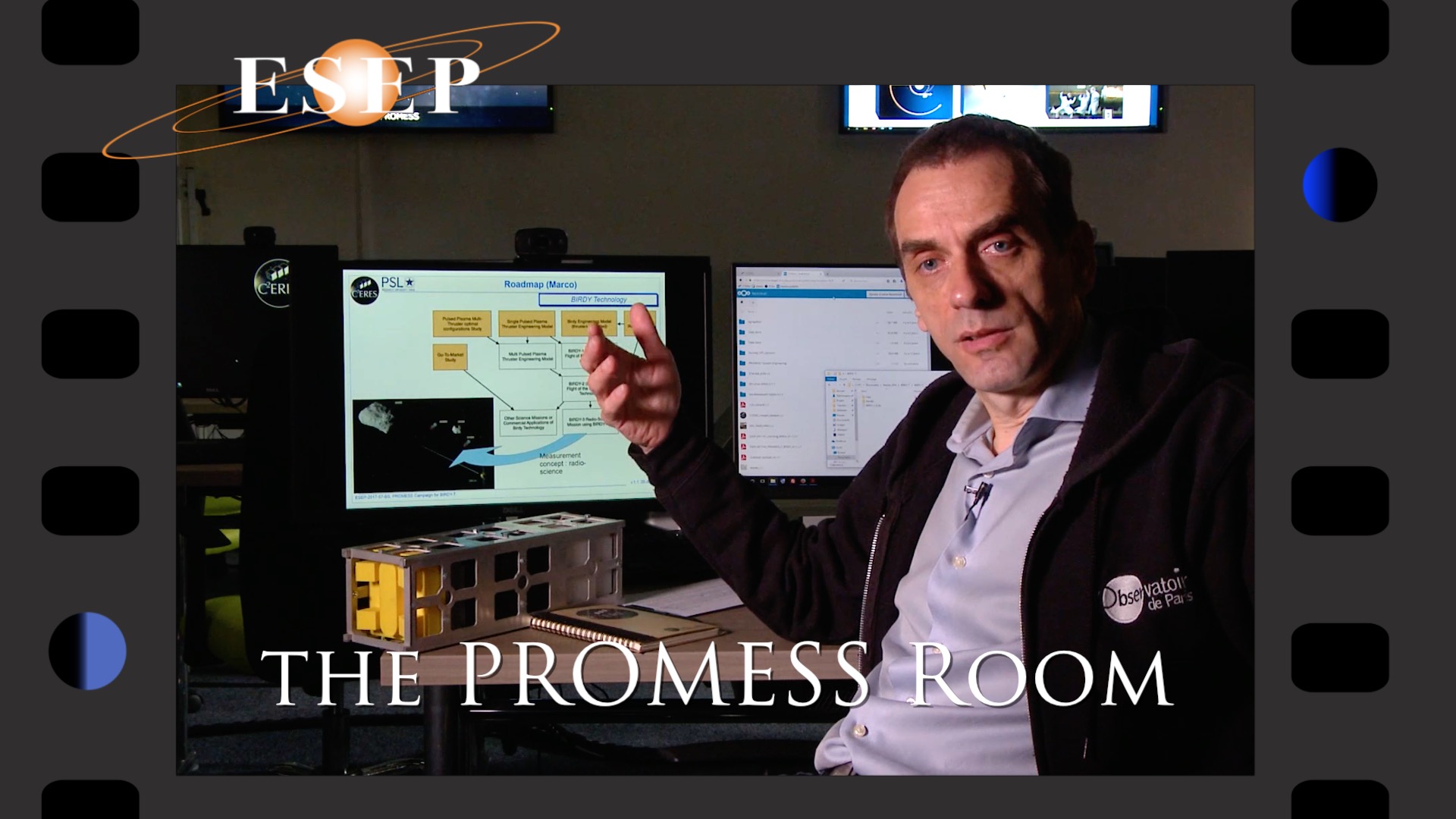Entretien
- Présentation
- Rubriques
- CTS - Complexe Technologique pour le Spatial
- ESEP - Exploration Spatiale des Environnements Planétaires
- Face à l'Univers : Immersion dans la recherche spatiale
- JWST (James Webb Space Tescope)
- Les métiers de l'ingénieur
- LESIA : 50 ans d’héritage spatial
- MMX (Martian Moons Exploration)
- Présentation du LESIA à l'AGU
- Partenaires
- Contact
ESEP - Exploration Spatiale des Environnements Planétaires
32 Entretiens
PICSAT update - 20 Octobre 2017: Technologie PICSAT
Sylvestre Lacour, Investigateur principal PICSAT, explique un peu de la technologie PICSAT.
PICSAT update - 20 Octobre 2017: le lancement s'approche.
Sylvestre Lacour, Investigateur principal PICSAT, fait le point sur l'état d'avancement de la mission.
PICSAT update - 20 October 2017: PICSAT science
Sylvestre Lacour, PICSAT PI, talks about the science of the mission.
PICSAT update - 20 Octobre 2017: PICSAT Technology
Sylvestre Lacour, PICSAT PI, explain some of the PICSAT technology.
PICSAT update - 20 Octobre 2017: de la science PICSAT
Sylvestre Lacour, Investigateur principal PICSAT, parle de la science de la mission.
PICSAT update - 20 Octobre 2017: Launch is coming soon.
Sylvestre Lacour, PICSAT PI, gives an update on the mission status.
PICSAT update - 26 Septembre 2017: station sol PICSAT
Vincent Lapeyrere, chef de projet PICSAT, montre la station sol de communication à l'Observatoire de Paris, site de Meudon, pour la mission PICSAT.
PICSAT update - 26 September 2017: PICSAT ground station
Vincent Lapeyrere, PICSAT Project Manager, shows the PICSAT ground station at the Paris Observatory in Meudon.
PICSAT update - 26 Septembre 2017: PICSAT en salle blanche
Vincent Lapeyrere, chef de projet de la mission PICSAT, montre PICSAT presque prêt dans la salle blanche.
PICSAT update - 26 September 2017: PICSAT in the clean room
Vincent Lapeyrere, PICSAT Project Manager, shows the PICSAT satellite in the clean room almost ready to fly.
Des jeunes terres
Emmanuel Marcq, planétologue au LATMOS (Université de Versailles), présente sa recherche théorique sur l'évolution des très jeunes planètes.
Nanotubes de Carbone
François Leblanc, planétologue au LATMOS (Université de Versailles) parle sur la technologie des nanotubes.
La salle PROMESS
Boris Segret, Ingénieur Système de l'ESEP (Observatoire de Paris), présente la salle PROMESS
COSMORBITRAP
Christelle Briois, planétologue au LPC2E (Université d'Orléans) explique le concept d'un orbitrap et le projet de miniaturisation pour envoyer un orbitrap dans l'espace.
Making comets in the lab
Robin Isnar, PhD student at LISA (University of Paris-Est Créteil) talks about his research work on comets.
Le Submillimeter Wave Instrument sur JUICE
Alain Maistrini, maître de conférence à l'Université Pierre et Marie Curie parle sur la technologie hétérodyne pour l'instrument SWI sur JUICE.
Astrochemistry in Space
Hervé Cottin, astrochemist at LISA (University Paris-Est Créteil) talks about a new concept idea for astrochemical experiments in Earth's orbit.
The PICSAT mission
David Lester, engineer at ESEP, explains about the PICSAT mission and its objectives to observe the transit of the planet beta Pictoris B in front of its star.
Early earths
Emmanuel Marcq, planetary scientist at LATMOS (University of Versailles), presents his theoretical research on the evolution of very young planets.
Measuring the ionosphere with CIRCUS
Didier Tiphène, astronomer at the Paris Observatory, explains the concept of the CIRCUS mission and how it will measure parameters of the terrestrial ionosphere.
Presentation of ESEP
Pierre Drossart, Director of ESEP, presents ESEP and its activities.
COSMORBITRAP
Christelle Briois, planetary scientist at LPC2E (University of Orléans), explain the concept of an orbitrap and the project to mininaturise one to send it to space.
Une comète au labo
Robin Isnar, étudiant en thèse au LISA (Université Paris-Est Créteil) parle sur son travail sur les comètes.
The Submillimeter Wave Instrument on JUICE
Hervé Cottin, astrochemist at LISA (University Paris-Est Créteil) talks about a new concept idea for astrochemical experiments in Earth's orbit.
Carbon Nanotubes
François Leblanc, planetary scientist at LATMOS (University of Versailles) talks about nanotubes technology and the application for cubesats.
Présentation du LABEX ESEP
Pierre Drossart, Directeur ESEP (Observatoire de Paris), présente l'ESEP et ces activités.
Measuring plasmas with a cubesat
Jean-Pierre Lebreton, planetary scientist at LPC2E (University of Orléans) presents the experiments to charactarise plasma measurements around a cubesat.
Mesurer l'ionosphère avec CIRCUS
Didier Tiphène, astronome à l'Observatoire de Paris, explique le concept de la mission CIRCUS pour mesurer les paramètres de l'ionosphère terrestre.
The ESEP PROMESS room
Boris Segret, System Engineer at ESEP (Paris Observatory), presents the PROMESS room.
Mesurer les plasmas avec un cubesat
Jean=Pierre Lebreton, planétologue au LPC2E (Université d'Orléans) présente les expériences dans l'installation PEPSO à Orléans.


